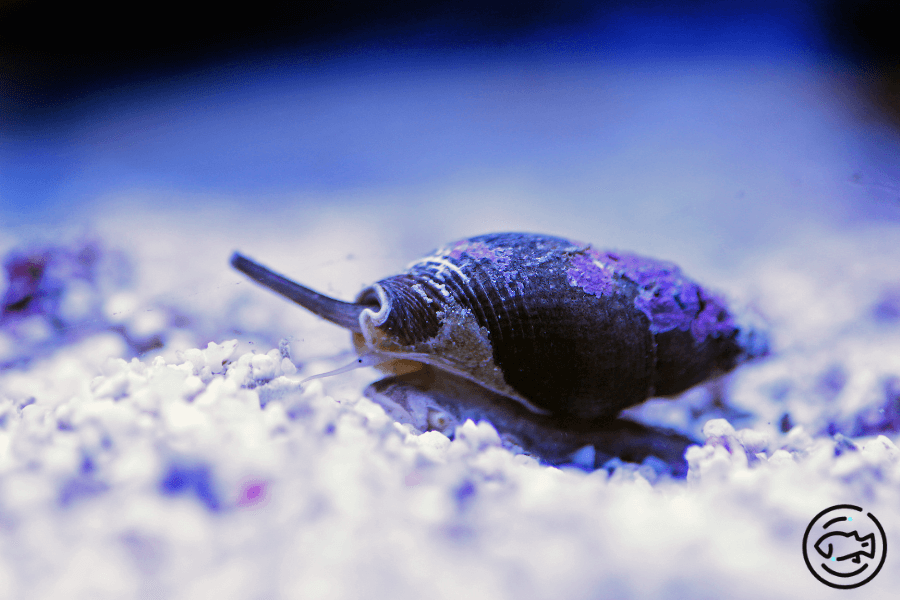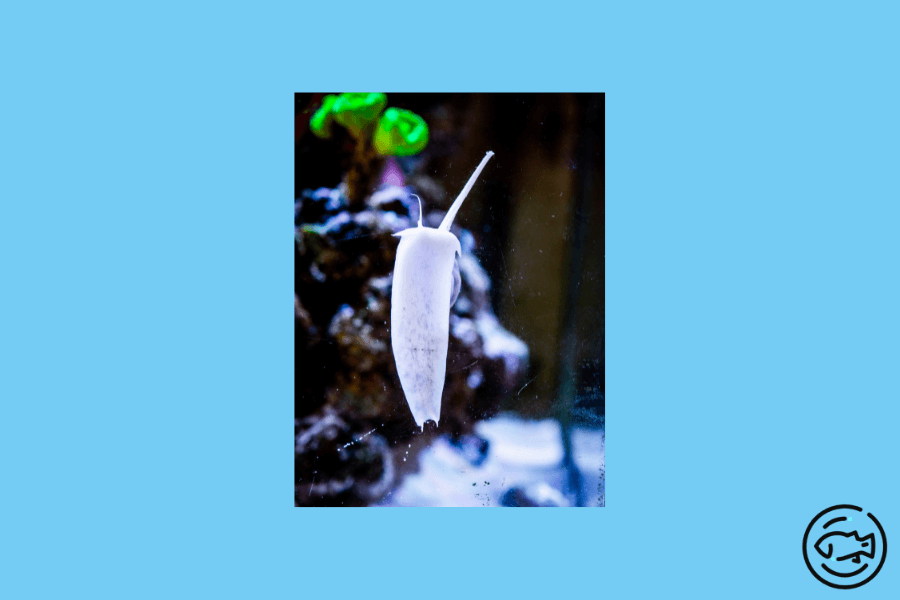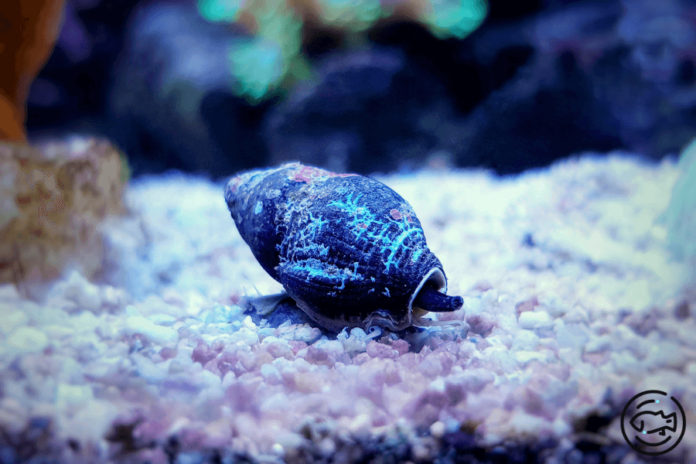The Nassarius snail (Nassarius sp.) is a highly effective scavenger and an efficient sand sifter. Its diet consists of a wide range of organic materials, making it an ideal addition to a cleanup crew for a saltwater aquarium.
Additionally, its burrowing behavior helps to aerate the sandy substrate, providing further benefits to the overall health and appearance of the tank. For those seeking a reliable and beneficial invertebrate for their saltwater aquarium, the Nassarius snail is an excellent choice.
There is no doubt that Nassarius snails will add a great deal of beauty to your saltwater tank as it is an effortless task to keep and feed them as they are easy to take care of. They are easy to maintain and care for because of their minimal maintenance and dietary requirements. Moreover, their robust constitution allows them to tolerate various environmental conditions. Because of these characteristics, they are also a good choice for novice aquarists.
While Nassarius Snails can be found in most parts of the world on the ocean bed, 35 species of Nassarius snails have been discovered. This article will focus on two most popular aquatic species in aquaculture hobby: Nassarius vibrex and Nassarius distortus. We will give you a brief overview of these species’ behavior and feeding habits as they are similar, as well as their interaction with one another.
Description Of The Nassarius Snails
The Nassarius snail is relatively small in size, with the maximum adult size reaching 2 cm or approximately 0.8 inches. However, it is typically smaller, measuring between 1-1.5 cm and 0.4-0.6 inches.
The shells of these snails display heavy sculpting with a flared lip near the aperture and often possess a sharp and unblemished tip.
The coloration of the shells varies and can range from white, yellow, sandy, and dark to various shades of brown. The surfaces of most specimens feature either ridges or protrusions.
The Nassarius snail is equipped with a beak, also known as a siphon, that resembles an elephant’s trunk. This organ serves both as a mouth and a means of breathing & smelling.
Behavior

The Nassarius snail generally spends most of its time submerged in the substrate, with only its proboscis, or siphon, protruding above the surface like a periscope.
However, upon catching the fragrance of decomposing organic matter, they instantly emerge from the substratum and swiftly move toward their food source.
Research has revealed that they possess a sophisticated olfactory system through which they can locate potential prey from distances of 1.5 to 2 meters. They are not sluggish in their movements, and once they recognize the odor’s origin, they quickly traverse the aquarium, waving their beak for food.
Aquarists usually refer to Nassarius snails as “Zombie snails” because of how they move their proboscis and rise up from the substrate in a manner that resembles the undead because of the way they move their proboscis.
After consuming a substantial meal, they will promptly bury themselves back in the sand. While generally considered peaceful, there have been instances of these snails attacking other individuals of their own species.
Determining the Sex of Nassarius Snails
The Nassarius snail species is neither hermaphrodite nor asexual. However, a phenomenon known as imposex affects all females, causing the development of little male organs. As a result, biologists must rely on alternative characteristics for determining sex, such as
- presence of a seminal vesicle in males, and
- in females, there is a capsule gland and a vulva.
This can only be done in laboratory settings.
Diet

Nassarius snails, such as Nassarius Vibex and Nassarius distortus, are opportunistic scavengers that consume dead organic matter. They do not consume algae and rather feed on the remains at the bottom of the sand bed, particularly detritus.
If you observe them actively foraging on top of the sand, it is an indication of their hunger. These snails have a voracious appetite and consume a significant amount of food relative to their body weight at a rapid pace.
For instance, studies have shown that certain species can consume 50-60% of their body weight within an average of 8-12 minutes.
In the natural habitat, the ability to quickly consume large quantities of food reduces the likelihood of predation as animals congregating around food sources become potential prey for predators.
In an aquarium setting, Nassarius snails are adept at scavenging and will consume leftover food, residue, and other organic matter. However, suppose there is an overpopulation of snails or a scarcity of naturally occurring food.
In that case, it is advisable to supplement their diet with meaty food such as frozen brine shrimp, freeze-dried larvae, & diced fish & seafood. Without adequate food, they may resort to cannibalism.
Caring for Nassarius Snails
Nassarius snails are relatively low-maintenance creatures. They have a wide tolerance for deviations in salinity and temperature in their natural habitat and can survive in contaminated and polluted areas.
This makes them well-suited to thrive in an aquarium setting. The tank size is not a crucial factor; one or two Nassarius snails can be comfortably kept in a tank as small as five gallons.
To provide the best living conditions, maintain the temperature between 72-80°F, the specific gravity at 1.023-1.025, the pH level between 8-8.4, and the water hardness around dKH 8-12.
These snails can reside on various substrates, including coarse sand, mud, and silt. However, research has shown that less than 5% of the species are adapted to a rocky environment, as a hard substrate (such as rocks or gravel) can impede their ability to bury themselves and cause stress.
Additionally, Nassarius snails can help to aerate the sandy substrate and reduce the growth of slime algae or cyanobacteria on the substrate surface by sifting through the substrate while searching for food.
Breeding
According to research, sexual maturity is attained by males measuring 11.5mm or larger and females measuring over 15mm.
During the Nassarius snail’s life cycle, the veliger (larvae) is seen to emerge from benthic capsules at the end of the planktonic phase.
The planktonic phase lasts for 1-2 months and is relatively long compared to other gastropods. Nassarius snails typically attach their egg capsules to hard substrates such as the glass of an aquarium, rocks, or decorations.
Each egg capsule can contain anywhere from thirty to several hundred embryos, which develop until the veliger stage is reached. Hatching takes place after approximately 9-15 days of encapsulated development, and complete larval development and metamorphosis take 25-35 days.
It’s important to note that microalgal foods such as Dunaliella sp., Chlorella sp., Nannochloropsis sp., Isochrisis sp., Skeletonema sp, Rhodomonas are not suitable for the larvae, as experiments have shown that they all died. Instead, a compound food or a liquid suspension for filter-feeder organisms should be provided.
Tank Mates
It is crucial to exercise caution when keeping Hermit crabs and clams in the same tank as Nassarius Snails.
There have been numerous reports of Hermit crabs (such as Halloween Hermit Crab and Blue Leg Hermit Crab) attempting to consume Nassarius Snails or take over their shells.
However, it has been suggested that providing an abundance of food and empty shells can decrease aggression.
There needs to be more information regarding the compatibility of Nassarius Snails with other aquatic creatures.
Some sources state that they will coexist peacefully with other snails, starfish, shrimp, hermit crabs, and non-aggressive fish and only consume dead, dying, or excess food that falls to the bottom of the tank.
However, there are also reports of Nassarius Snails attacking and destroying other species of snails, such as Nerite snails, Stomatella snails, and Trochus Snails, even when they are not experiencing food shortages.
Some hypothesis points out that the real culprits could be the predatorial Welk snails, which are undesirable in a reef system.
Conclusion
Nassarius Snails are a hardy, beneficial, and non-aggressive species of saltwater snail that do not necessitate extensive care.
These snails will help maintain your aquarium’s cleanliness and aerate the sandy substrate.



